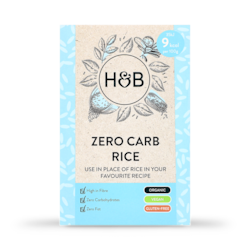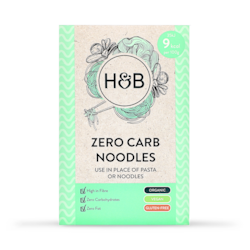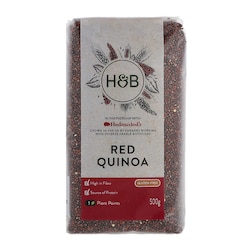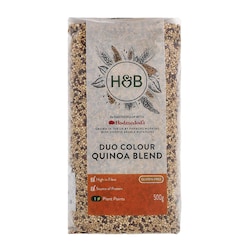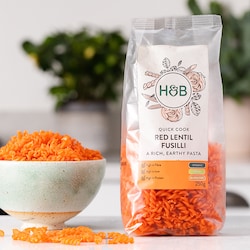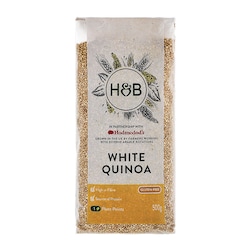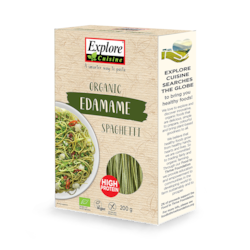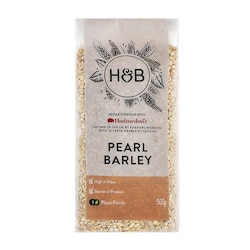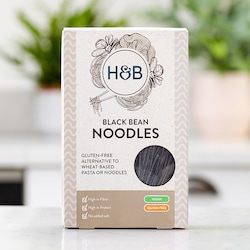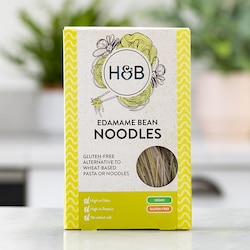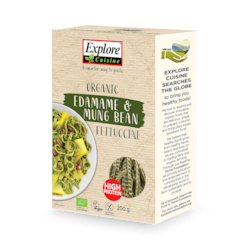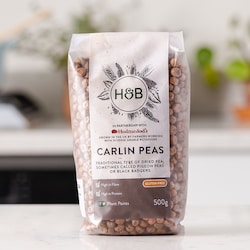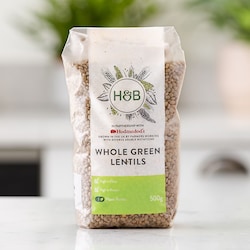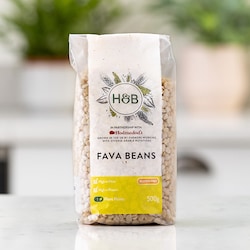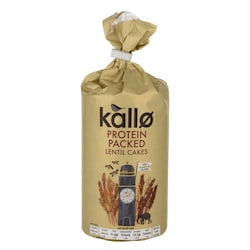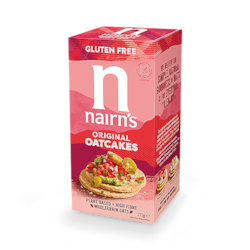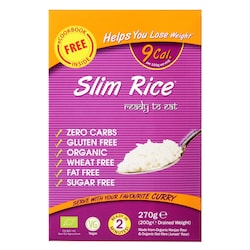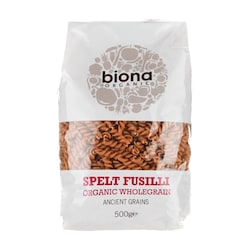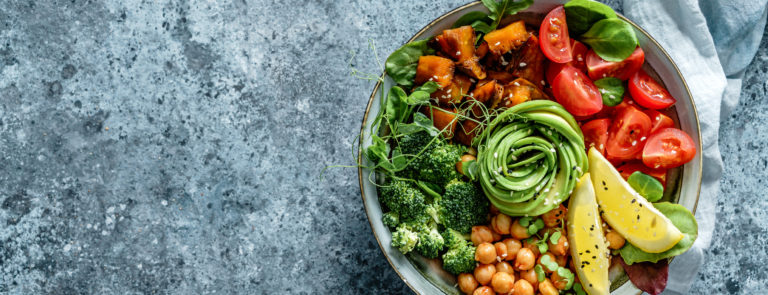15% off £30 OR 20% off £40
Brown rice - types, calories & benefits
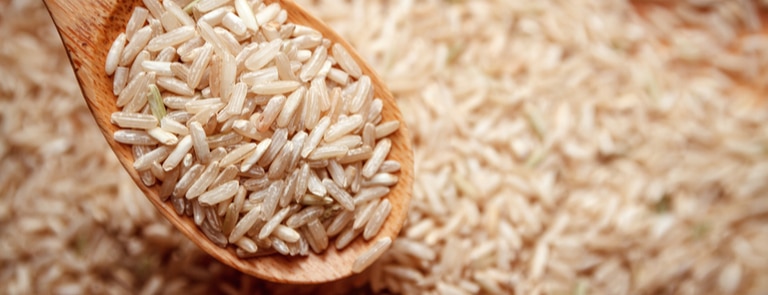
Rice is a cereal grain and a diet staple for 51% of the world’s population.1 There are all kinds of rice available, from your standard white to arborio (for risottos), black, red, jasmine and, the rice we’re discussing today, brown rice.
In this article, we’ll explain what brown rice is and why it’s better for health than white rice. We’ll reveal the nutritional profile of brown rice, so you can discover its vitamin and mineral content – and all the health benefits that go along with it. Finally, we’ll advise a perfect portion size for brown rice and how to enjoy it!
What is brown rice?
Unlike other kinds of rice, brown rice is a whole grain, as it incorporates all parts of the wheat grain: the bran, germ and endosperm.2 Only the inedible hull is removed.
This bran layers that remain give it its colour, chewy texture and almost nutty flavour.
Types of brown rice
There are a few different types of brown rice you may come across, including:
- Short grain brown rice – sticky and great for rice puddings and risotto
- Medium grain brown rice – tender and moist when cooked, making it perfect for popping in salads, soups and side dishes
- Long grain brown rice – this popular type is chewy, nutty and usually used as a side, in stir frys or in dishes like fried rice / pilaf
- Light brown rice – half of the bran is removed from regular brown rice to make light brown rice. This leaves you with a light brown, mildly nutty rice with a much shorter cooking time regular long grain brown rice
- Brown basmati rice – basmati means ‘queen of scents’ in Hindi. Brown basmati rice is the same as white basmati rice, it just hasn’t been milled and processed as much
- Brown arborio rice – this short-grain Italian rice also comes in ‘brown’ with none of the nutrition stripped. Try it in risottos, paellas, and rice puddings
- Coconut brown rice – jazz up your brown rice by cooking it with coconut milk for an added creamy and delicious flavour.
Is brown rice good for you?
Yes! Brown rice packs in loads of healthy nutrients into such a small package. This wholegrain has more protein, fibre, vitamins and minerals that your regular white rice and can be used in the same way – so why not make the switch? Keep reading to find out just how good brown rice is for you.
Summary
- All white rice starts as brown rice
- Brown rice is simply complete rice that hasn’t had its hull / bran removed
- The bran/hull is where brown rice gets its extra nutrients, protein and fibre
- There are several types of brown rice available, including basmati brown rice and brown arborio rice
Brown rice vs white rice
In contrast with brown rice, white rice is not whole grain – it’s a refined grain, which means that the bran and germ have been separated from the endosperm. A large amount of rice grain’s nutritional content is in the bran and germ, so white rice is immediately less fibrous and nutritious than brown.3
Below we have compared the nutrition of ‘easy cook’ brown4 and white rice5 (from the same brand) so you can see the nutritional difference.
Calories in brown and white rice
There isn’t much difference between brown rice and white rice when it comes to calorie content:
- Brown rice (100g, uncooked): 197kcal
- White rice (100g, uncooked): 155kcal
The reason brown rice has a slightly higher calorie count is that the bran (which is removed from white rice) contains some fat. Don’t let this put you off though, it’s the good plant-based kind!
Brown and white rice fibre
One of the best benefits brown rice over white is its fibre content:
- Brown rice (100g, uncooked): 8.7g
- White rice (100g, uncooked): 7.6g
The bran is where all the fibre magic happens, which is why brown rice has more.
Carbs in brown and white rice
There isn’t a huge difference in the carb content of brown and white rice:
- Brown rice (100g, uncooked): 36.9g
- White rice (100g, uncooked): 30.4g
Brown rice naturally has a few more carbs due to its bran – you just need to remember that this is where all the good stuff is!
Protein in brown and white rice
Although not considered a substantial protein source on its own, both brown and white rice contain a few grams of the stuff:
- Brown rice (100g, uncooked): 4.3g
- White rice (100g, uncooked): 3.5g
As you can see, brown rice tops white a little in protein content.
Brown and white rice nutrition
The beauty of brown rice lies in its bran / husk, where lots of vitamins and minerals essential for health can be found. White rice has them too, but just not as much:
| White rice (% of RDI)* | Brown rice (RDI)* | |
|---|---|---|
| Iron | 1% | 2% |
| Niacin | 2% | 8% |
| Magnesium | 3% | 11% |
| Manganese | 24% | 45% |
| Phosphorus | 4% | 8% |
| Thiamine | 1% | 6% |
| Vitamin B6 | 5% | 6% |
| Zinc | 3% | 4% |
* based on a 195g portion of cooked rice
Summary
- Brown rice has more calories, fibre, carbs, protein, vitamins and minerals than white rice
8 brown rice benefits
-
Preserves nutrients
Producing white rice incurs a 67% loss of vitamin B3, an 80% loss of vitamin B1, a 90% loss of vitamin B6%, a 60% loss of iron, and a 50% loss of both phosphorus and manganese.8 Your body could have used those nutrients for essential processes that keep you fit and healthy!9
-
Protects heart health
Brown rice is rich in lignans, which white rice isn’t. Lignans enhance heart health by decreasing fat present in the blood, and reducing blood pressure.10
Handpicked content: 6 foods to improve your heart health
-
Brown rice contains more antioxidants
Brown rice is significantly higher in antioxidants than white rice.11 The antioxidants within brown rice reduce oxidative damage throughout the body.12
-
Brown rice is better for achieving any weight loss goals
Whole-grain consumption is linked with a lower weight.13 Studies that focus on brown rice show that incorporating it into your diet can lower BMI and result in a smaller waist to hip circumference.14
-
Brown rice is higher in fibre
Fibre is essential for gut health, weight maintenance, healthy bathroom habits and so much more. Enjoy a healthy serving of it with your brown rice.
-
Brown rice is very high in manganese
Manganese is a mineral needed for several bodily processes like wound healing, bone development, muscle contraction metabolism, blood sugar regulation and nerve function.15And brown rice is full of the stuff! Just 100g of uncooked brown rice provides 45% of your recommended daily intake of magnesium.16
-
Brown rice is naturally gluten free
Grains like bread, pasta and couscous all contain a protein called gluten, so brown rice could be a great alternative if you need to forgo the gluten.
-
Brown rice has a lower glycemic index
It is digested slower by our bodies than white rice and has less of an impact on blood sugar levels.
Summary
- There are lots of benefits of brown rice; it can help look after your heart, maintain your weight and nourish you with vitamins and mineralsitsi
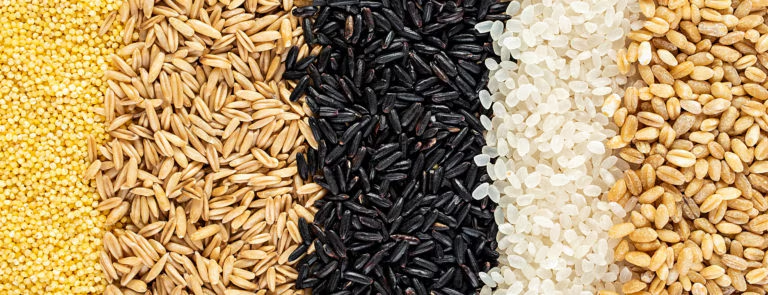
The recommended portion size of brown rice
Brown rice FAQs
Your burning questions about brown rice answered!
-
How long does brown rice take to cook?
It depends on what type you’re using; here are a few estimates:
- Short grain brown rice: 25 minutes after being soaked overnight
- Medium grain brown rice: 15-20 minutes after being soaked for at least 4 hours
- Long grain brown rice: 45 minutes
- Light brown rice: 20 minutes
- Easy cook brown rice: 22-25 minutes
-
Is brown rice gluten-free?
Brown rice is naturally gluten-free (like most types of rice) but make sure to check the packaging of your rice to see if it has added gluten-containing ingredients or if it’s been processed in a factory that handles gluten.
-
How long does brown rice last in the fridge?
Cooked brown rice should last around 4 days in the fridge if covered tightly in a shallow container. You can keep it in the freezer for even longer, too – around 6 months.
-
Is brown rice fattening?
Nope! You do not need to worry about fat when it comes to brown rice. 100g of uncooked easy cook brown rice contains around 1.6g of fat – and it’s the healthy plant-based kind anyway.
-
Is brown rice whole grain?
Yep, one of the best wholegrains around!
Summary
- Turns out brown rice is better than white rice in a variety of different ways!
- It has more protein, fibre, vitamins and minerals than white rice
- 75g of uncooked brown rice is a recommended portion size
Last updated: 24 May 2021
- http://www.fao.org/3/u8480e/u8480e07.htm
- https://www.hsph.harvard.edu/nutritionsource/what-should-you-eat/whole-grains/
- https://www.heart.org/en/healthy-living/healthy-eating/eat-smart/nutrition-basics/whole-grains-refined-grains-and-dietary-fiber/
- https://www.tesco.com/groceries/en-GB/products/278086264
- https://www.tesco.com/groceries/en-GB/products/254877356
- http://nutritiondata.self.com/facts/cereal-grains-and-pasta/5813/2
- http://nutritiondata.self.com/facts/cereal-grains-and-pasta/5707/2
- http://www.whfoods.com/genpage.php?tname=foodspice&dbid=128
- https://www.nhs.uk/conditions/vitamins-and-minerals/
- https://pubmed.ncbi.nlm.nih.gov/20003621/
- https://pubmed.ncbi.nlm.nih.gov/21535639/
- https://pubmed.ncbi.nlm.nih.gov/25075608/
- https://www.infona.pl/resource/bwmeta1.element.springer-doi/
- https://pubmed.ncbi.nlm.nih.gov/24829736/
- https://www.ncbi.nlm.nih.gov/pmc/articles/PMC3230726/
- http://nutritiondata.self.com/facts/cereal-grains-and-pasta/5707/2
- http://www.whfoods.com/genpage.php?tname=foodspice&dbid=128


